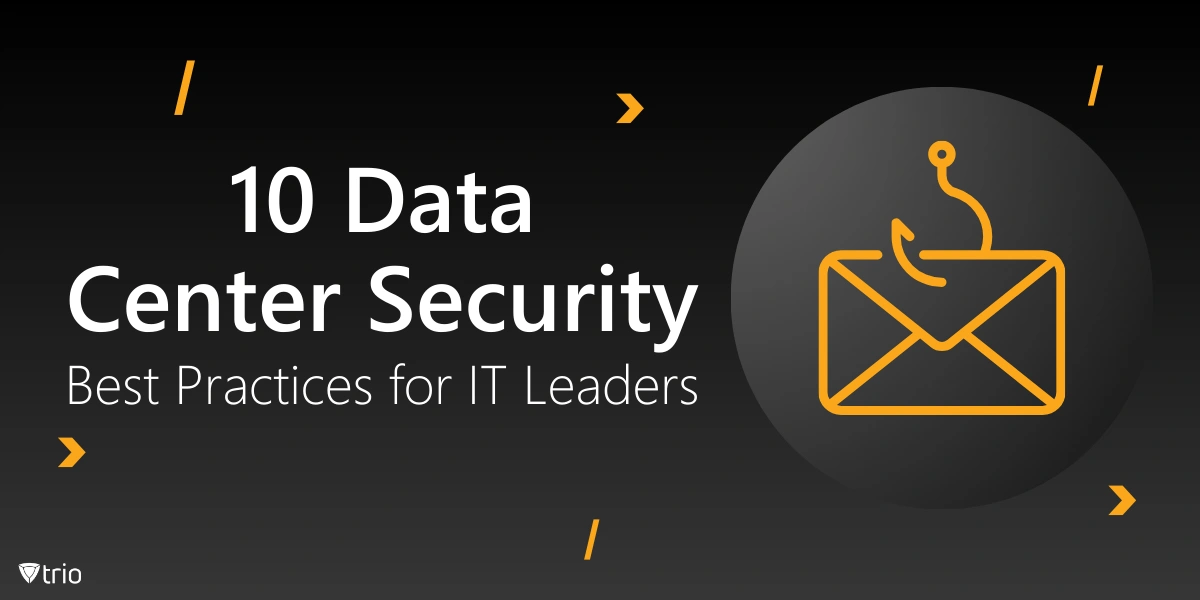Data centers serve as the nerve center for businesses, powering everything from cloud storage to critical operations. With the rising complexity of IT infrastructures, implementing robust data center security best practices has become necessary to ensure both physical and digital protection. Keeping up with security standards is no longer a choice—it’s a necessity to maintain smooth server management and business continuity.
As cyber threats grow in sophistication and frequency, the risks extend beyond just digital breaches. Insider threats and physical vulnerabilities also pose significant dangers to your servers. In this guide, we’ll cover 10 essential best practices that can help IT leaders fortify data center security while ensuring efficient server management.
1- Implement Multi-Factor Authentication (MFA) Everywhere
Multi-Factor Authentication (MFA) isn’t just a good-to-have; it’s a must for meeting essential data center security requirements. Think about it this way—if a password gets leaked, MFA acts as your second line of defense. Apply it across the board, from physical access to your data center to administrative logins on critical systems.
2- Use Role-Based Access Control (RBAC)
A smart approach to security is controlling who can do what. Role-Based Access Control (RBAC) helps streamline the management of data center access. By defining roles clearly, you limit potential damage from insider threats. Keep an eye on roles—regularly review and update them to reflect any organizational changes.
3- Conduct Regular Security Audits and Penetration Testing
You can’t protect what you don’t evaluate. A thorough data center audit combined with penetration testing can expose weak points before they become real problems. Penetration testing is a method of simulating cyberattacks on your systems to identify vulnerabilities and assess how well your security measures hold up against real-world threats. For unbiased results, hire external experts who can assess both your digital defenses and physical security layers with fresh eyes.

4- Implement Strong Physical Security Measures
Data breaches aren’t limited to the digital world. Data center physical security is critical, as physical intrusions can cause significant damage. Incorporate tools like biometric scanning, mantraps, and video surveillance to ensure only authorized personnel gain access. Guard patrols also add an extra layer of security to prevent breaches.
5- Monitor and Log Everything
To detect any suspicious behavior, whether physical or digital, constant monitoring is key. Effective data center security solutions involve using SIEM systems to track and analyze logs in real-time, helping to quickly flag unusual activity before it escalates into a problem. SIEM systems (Security Information and Event Management) collect, analyze, and monitor security logs and events in real-time to detect suspicious activities and respond to potential threats within an organization’s IT environment.

6- Use Encryption for Data at Rest and in Transit
Encryption acts as your shield when data is intercepted. Using data center security software like AES for data at rest and TLS for data in transit ensures that unauthorized users cannot read or misuse sensitive information, even if they manage to access it. This extra layer of protection ensures that even if a hacker intercepts your data, they can’t do anything with it without the proper decryption keys. By encrypting both at rest and in transit, you protect sensitive information throughout its entire lifecycle, minimizing risks from data breaches or leaks.
7- Implement Redundant Power and Cooling Systems
Power outages and overheating can lead to costly downtime and equipment damage, which impacts your data center security. To prevent disruptions, set up backup generators, uninterruptible power supplies (UPS), and closely monitor cooling systems. These measures will help protect your hardware and data and ensure continuous operations without risk.
8- Secure Endpoints and Networks
Every connected device, from laptops to servers, can be a gateway for cyberattacks. Think of it this way—one unsecured laptop is all it takes for a cybercriminal to gain access to your entire data center, making endpoint security a critical line of defense. Strengthening endpoint security and network defenses is essential for safeguarding data center infrastructure. Implement firewalls, intrusion detection/prevention systems (IDPS), and keep devices updated with the latest security patches to block potential threats effectively.
9- Backup Data Regularly and Test Recovery Plans
Data loss can cripple your operations, which is why a solid disaster recovery plan is needed. Automate regular backups to keep your critical information safe, and don’t stop there—run disaster recovery drills to ensure your team knows how to restore systems quickly and efficiently in case of a breach or failure. These steps will empower your team to act swiftly and effectively, minimizing potential damage during a security breach or system failure.
10- Train Employees on Security Awareness
Your best security tools are ineffective if employees don’t use them correctly. A joint study by Stanford University Professor Jeff Hancock and cybersecurity firm Tessian revealed that an astounding 88% of data breaches are the result of employee errors. Human error is a major risk, so regular security training is essential. Teach your team to recognize phishing attempts, use strong passwords, and follow conditional access policies, ensuring everyone contributes to maintaining a secure data environment.
Trio: Protect Your Mobile Endpoints
Mobile Device Management (MDM) plays a key role in ensuring the security of your data center by providing centralized control over mobile endpoints, which are often vulnerable entry points for cyberattacks. With MDM solutions like Trio, IT teams can automate security updates, enforce data encryption, and monitor for suspicious activity across all devices. This helps mitigate risks posed by unsecured endpoints while maintaining operational efficiency.
Interested in improving your security posture? Try a free demo with Trio to see how it can fit into your overall security strategy.
See Trio in Action: Get Your Free Trial Now!
Conclusion
Securing your data center is more than checking boxes; it’s about actively defending against evolving threats. From multi-factor authentication to regular security audits, each practice strengthens your data center’s resilience. IT leaders should act now by adopting these best practices and frequently reviewing security policies to stay ahead of potential risks. Prioritize these measures today to safeguard your critical infrastructure and protect sensitive data.




